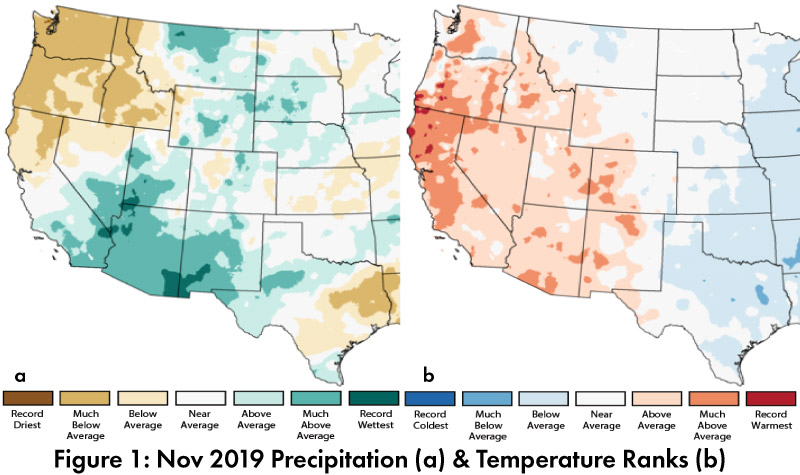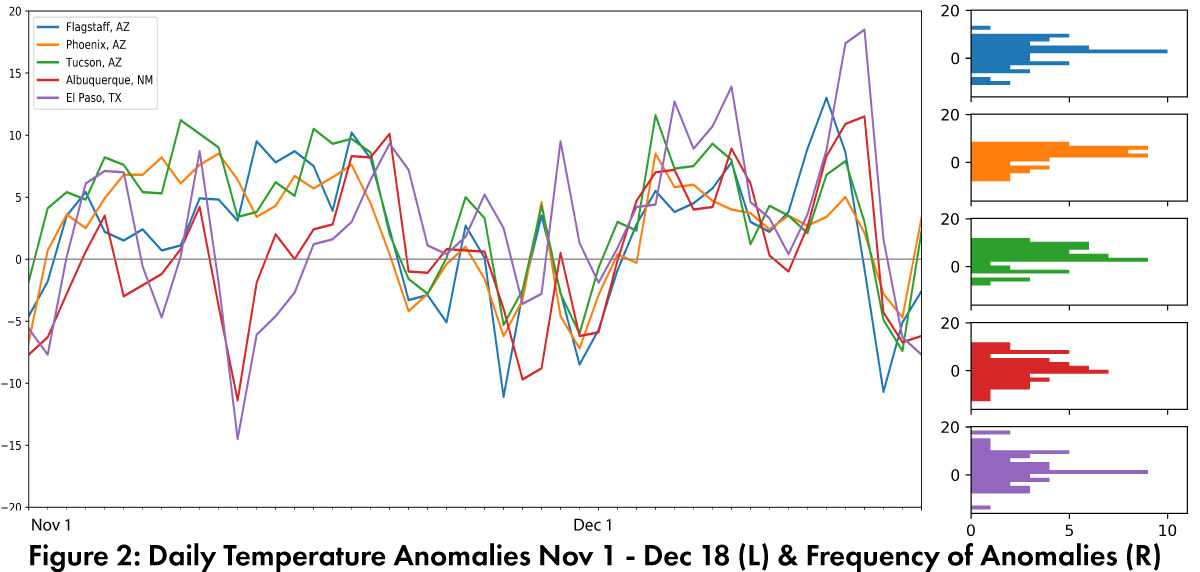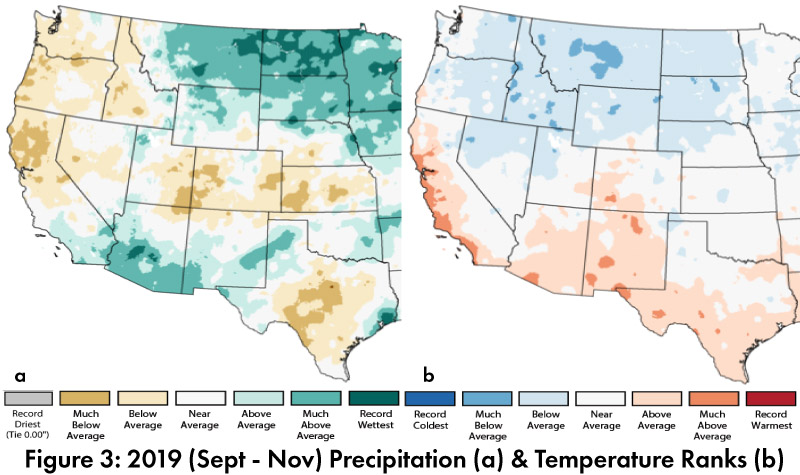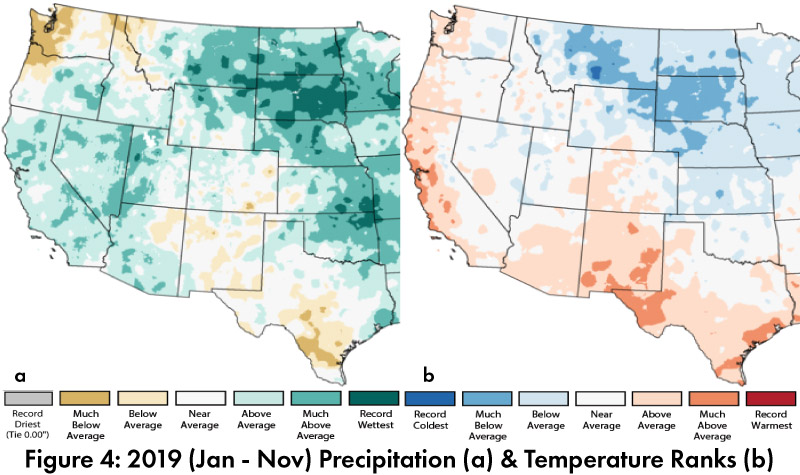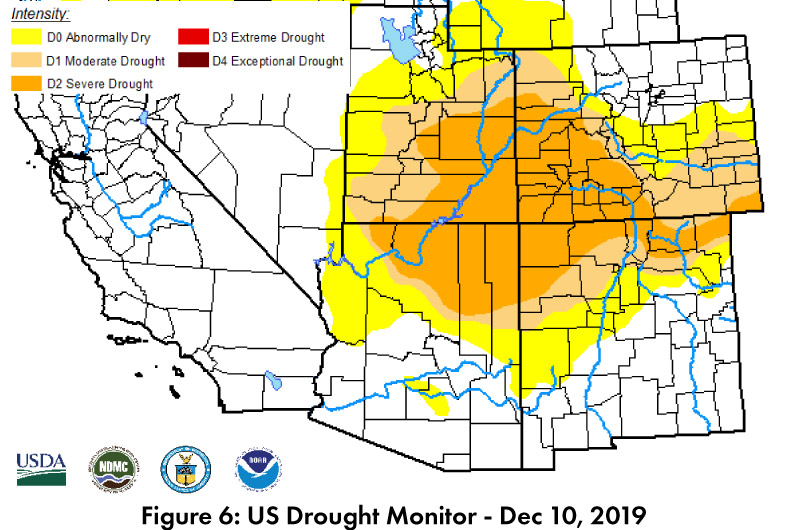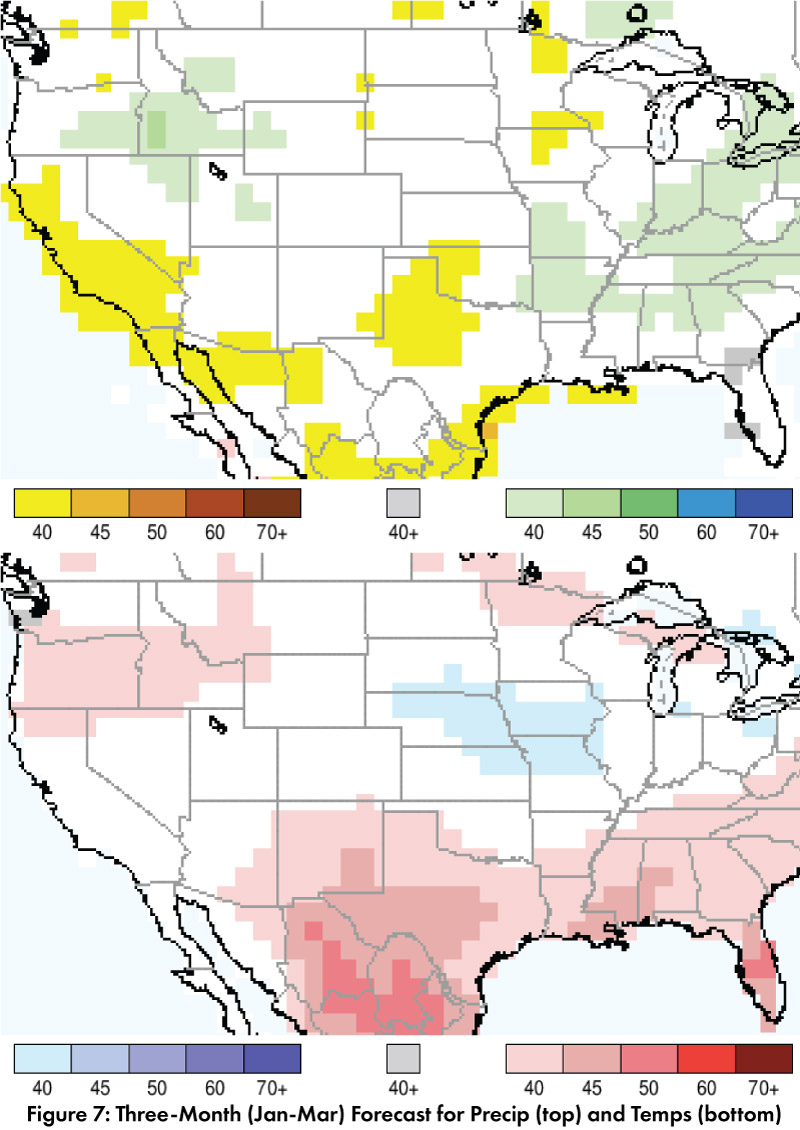Southwest Climate Outlook December 2019 - Climate Summary
Monthly Precipitation and Temperature: November precipitation was much above average in much of Arizona save for a small pocket of below average in the four corners region, while New Mexico was mostly above average or much above average (Fig. 1a). November temperatures were above average or much above average in most of Arizona and ranged from average to much above average in most of New Mexico (Fig. 1b). The daily average temperature anomalies for Oct 1 – Nov 19 (Fig. 2) highlight the fluctuations at select stations around the region.
Fall 2019: Fall precipitation (Sept-Nov) in Arizona ranged from much below average in the four corners region to much above average or even record wettest in the southern third of the state (Fig. 3a). Fall precipitation for New Mexico was average to below average in the northern third, and average to much above average across the rest of the state (Fig. 3a). Fall temperatures were generally above average across Arizona and New Mexico (Fig. 3b).
Annual: Total precipitation (Jan-Nov 2019) was mostly average to above average in Arizona except for the four corners region. New Mexico was average to below average across most of the state (Fig. 4a). Mean temperatures are mostly average to above average in Arizona and above average to much above average in New Mexico (Fig. 4b).
Snowpack & Water Supply: As of Dec 17, there is a wide range of snowpack values across Arizona and New Mexico, with more consistent above median snowpack in northern New Mexico and into Utah and Colorado (Fig 5). Many reservoirs in the region are at or above the values recorded this time last year, but most are below their long-term average (see Arizona and New Mexico reservoir storage).
Drought: The Dec. 10 U.S. Drought Monitor (USDM) has scaled back some of the drought characterizations in the Southwest, particularly in the southern regions of Arizona and New Mexico (Fig. 6). This reflects the wetter than normal conditions in November, but it remains to be seen whether this pulse of moisture provides any substantive and long-term drought relief for the affected regions. A large pocket of “Severe Drought” (D2) remains centered on the Four Corners region, reflecting acute and accumulated precipitation deficits.
ENSO Tracker: Oceanic and atmospheric conditions are generally consistent with an ENSO-neutral outlook for 2019 and into 2020 (see ENSO-tracker for details).
Precipitation and Temperature Forecast: The three-month outlook for January through March calls for increased chances of below-normal precipitation along the U.S.-Mexico borderlands, Southern California, and eastern New Mexico, with equal chances of above or below normal precipitation across much of the rest of the Southwest. (Fig. 7, top). The three-month temperature outlook calls for increased chances of above-normal temperatures across most of Texas, New Mexico, and Southeastern Arizona, along with much of north central Mexico (Fig. 7, bottom).
Online Resources
- Figures 1,3-4 - National Centers for Environmental Information - ncei.noaa.gov
- Figure 2 - Climate Assessment for the Southwest - climas.arizona.edu
- Figure 5 - Natural Resources Conservation Service - nrcs.usda.gov
- Figure 6 - U.S. Drought Monitor - droughtmonitor.unl.edu
- Figure 7 - International Research Institute for Climate and Society - iri.columbia.edu


